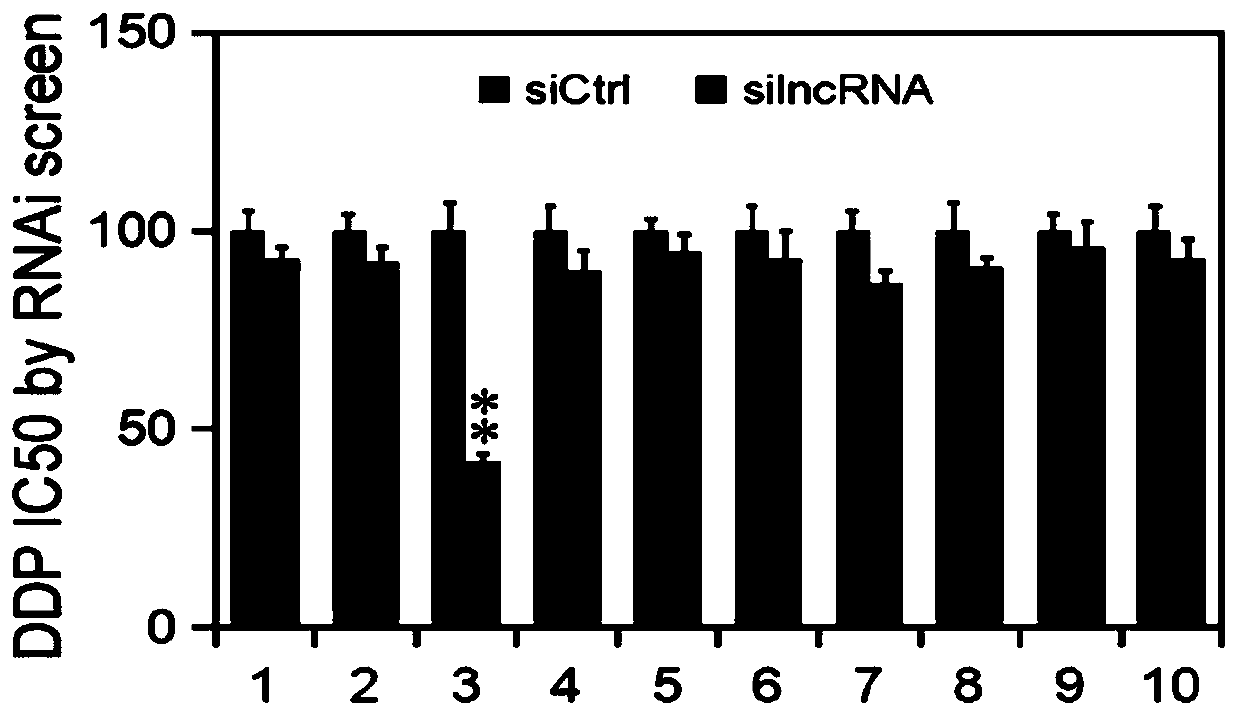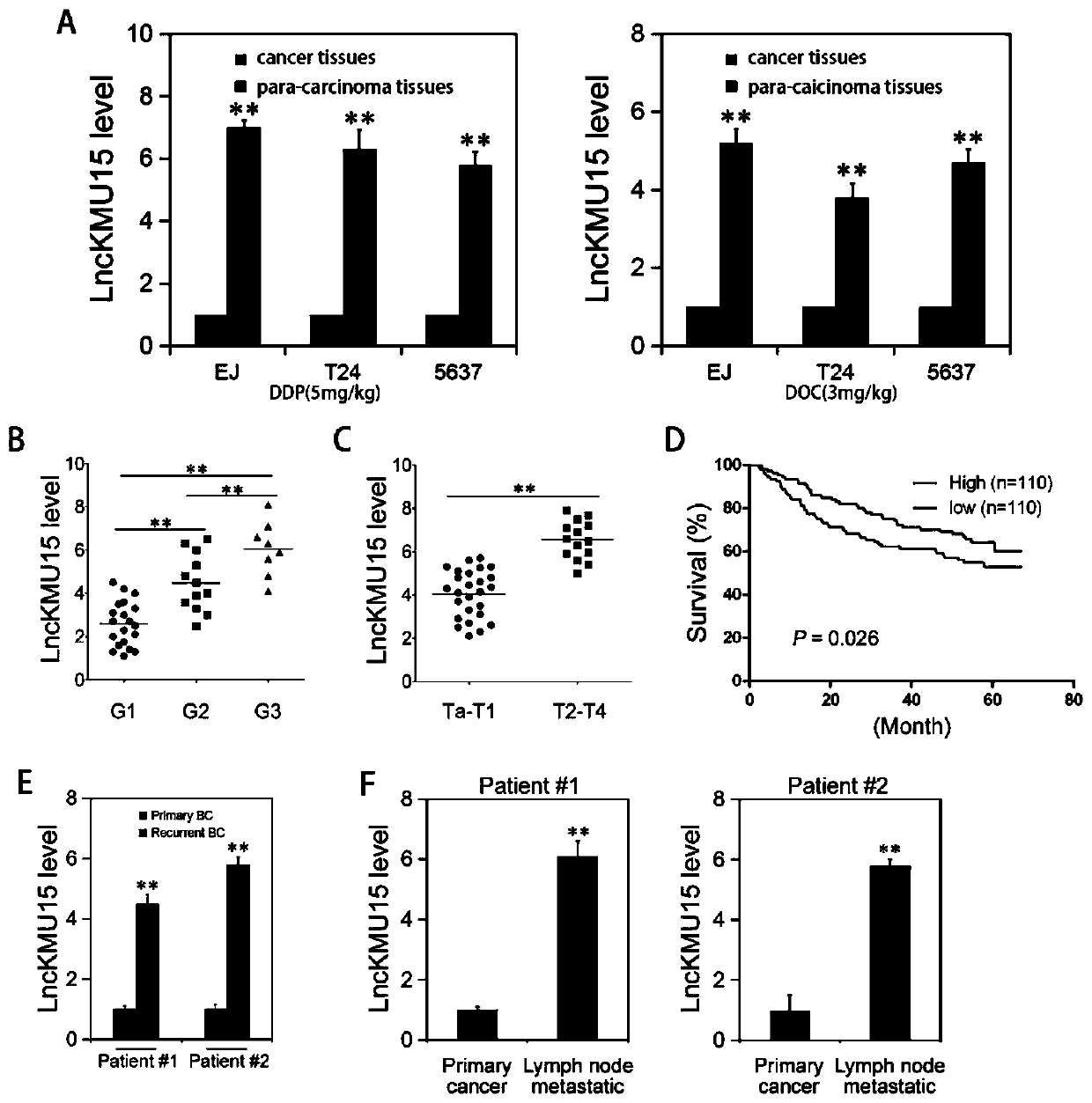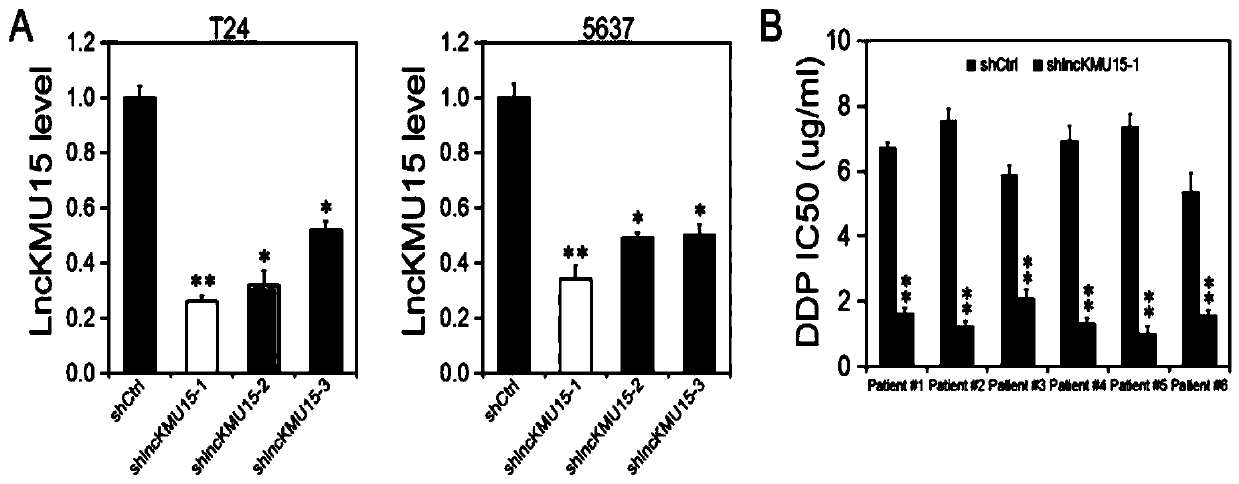Long non-coding RNA for diagnosis, treatment and monitoring on bladder cancer and application of RNA
A bladder cancer and application technology, applied in the field of long non-coding RNA and its application, can solve the problems of high toxicity and weak anticancer activity
- Summary
- Abstract
- Description
- Claims
- Application Information
AI Technical Summary
Problems solved by technology
Method used
Image
Examples
Embodiment 1
[0023] Example 1: Analysis of lncRNA chip expression in bladder cancer tissue
[0024] 1. Materials and methods
[0025] 1. Materials
[0026] Tissue samples were obtained from 3 pairs of inpatient surgical resection samples of bladder cancer patients, each pair containing bladder cancer tissue and paired paracancerous tissue.
[0027] 2. Method
[0028] (1) Extraction of total RNA from tumor tissue and normal tissue: Total RNA from bladder cancer tissue and paracancerous tissue was extracted according to the instructions of Qiagen's RNA extraction kit (RNeasy Micro Kit, Cat. No. 74004).
[0029] (2) Fluorescent labeling of sample RNA (ArrayStar Human LncRNA Microarray V3.0Service)
[0030] (3) Synthesis of first-strand cDNA by reverse transcription: start with Total RNA and Oligo(dT)Primer containing T7 promoter sequence as a primer, and use CbcScript enzyme to synthesize first-strand cDNA.
[0031] (4) Synthesis of second-strand cDNA: DNA polymerase uses the RNA fragment...
Embodiment 2
[0039] Example 2: In vivo experiments found that lncRNA-KMU15 was highly expressed in chemotherapy-resistant bladder cancer cell lines and its correlation with clinical stage and prognosis
[0040] 1. Experimental materials
[0041] EJ, T24, and 5637 drug-resistant bladder cancer cells were injected subcutaneously into nude mice, and the expression difference of lncRNA-KMU15 in different chemotherapy-sensitive cells was verified in vivo. Bladder cancer tissues of bladder cancer patients with different stages and grades. Bladder cancer tumor tissues resected after primary and recurrence. Tumor tissues in situ and lymph node metastases in patients with bladder cancer.
[0042] 2. Experimental methods and results
[0043] 1. Subcutaneous injection of bladder cancer cell metastasis model in nude mice: iodophor disinfected the skin of nude mice, counted drug-resistant cell lines of EJ, T24 and 5637 according to routine, digested with EDTA / trypsin, centrifuged and resuspended in ...
Embodiment 3
[0068] Example 3: construction of lncRNA-KMU15 knockdown vector
[0069] 1. Experimental method
[0070] 1. Lentiviral interference vector pSicoR-GFP digestion and recovery
[0071]The pSicoR-GFP vector was digested overnight at 37°C with Hpa I and Xho I enzymes and buffer (custmart). The enzyme digestion system:
[0072]
[0073] 2. Design lncRNA KMU15 gene lentiviral interference sequence
[0074] (1) Design the interference sequence KMU original sequence
[0075] Website for designing interference sequences: http: / / rnaidesigner.thermofisher.com / rnaiexpress / . The primer sequences were synthesized in vitro according to the requirements of the lentiviral interference vector pSicoR-GFP vector. Select the three highest-scoring interference sequences, and synthesize primers based on the designed shRNA:
[0076]
[0077]
[0078] (2) Centrifuge the primers, add water to dissolve the primers to a final concentration of 10 μmol, take 10 μl F + 10 μl R, 95° C. for 5 min...
PUM
 Login to View More
Login to View More Abstract
Description
Claims
Application Information
 Login to View More
Login to View More - R&D
- Intellectual Property
- Life Sciences
- Materials
- Tech Scout
- Unparalleled Data Quality
- Higher Quality Content
- 60% Fewer Hallucinations
Browse by: Latest US Patents, China's latest patents, Technical Efficacy Thesaurus, Application Domain, Technology Topic, Popular Technical Reports.
© 2025 PatSnap. All rights reserved.Legal|Privacy policy|Modern Slavery Act Transparency Statement|Sitemap|About US| Contact US: help@patsnap.com



